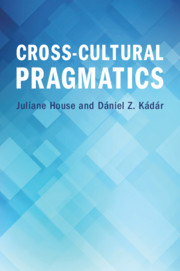Book contents
- Cross-Cultural Pragmatics
- Cross-Cultural Pragmatics
- Copyright page
- Contents
- Figures and Illustrations and Tables
- About the Authors
- Acknowledgements
- 1 Introduction
- Part I The Basics
- 2 Background
- 3 How Is Pragmatic Contrasting Possible?
- 4 The Nature of Cross-Cultural Pragmatic Data and Their Analysis
- 5 Politeness
- Part II Framework
- Part III Applying the Framework
- Notes
- Glossary
- References
- Index
3 - How Is Pragmatic Contrasting Possible?
from Part I - The Basics
Published online by Cambridge University Press: 17 September 2021
- Cross-Cultural Pragmatics
- Cross-Cultural Pragmatics
- Copyright page
- Contents
- Figures and Illustrations and Tables
- About the Authors
- Acknowledgements
- 1 Introduction
- Part I The Basics
- 2 Background
- 3 How Is Pragmatic Contrasting Possible?
- 4 The Nature of Cross-Cultural Pragmatic Data and Their Analysis
- 5 Politeness
- Part II Framework
- Part III Applying the Framework
- Notes
- Glossary
- References
- Index
Summary
Chapter 3 examines the intriguing question of how contrasting pragmatic data is possible. We argue that not every instance of interaction can be contrastively examined – rather we need to identify our tertium comparationis. In so doing, it is fundamental to consider the phenomenon of conventionalisation, i.e. the degree of recurrence of a particular pragmatic phenomenon in the language use and evaluations of members of a social group or a broader linguaculture. We argue that the cross-cultural pragmatician needs always to consider whether the phenomena to be compared are sufficiently conventionalised in the respective linguacultures or not. We discuss various situations, such as lingua franca contexts, in which conventionalisation can be a particularly complex issue to consider. We point out that conventionalisation manifests itself in two intrinsically interrelated types of language use, namely, convention and ritual, which play an important part in our analytic framework.
Keywords
- Type
- Chapter
- Information
- Cross-Cultural Pragmatics , pp. 29 - 42Publisher: Cambridge University PressPrint publication year: 2021

